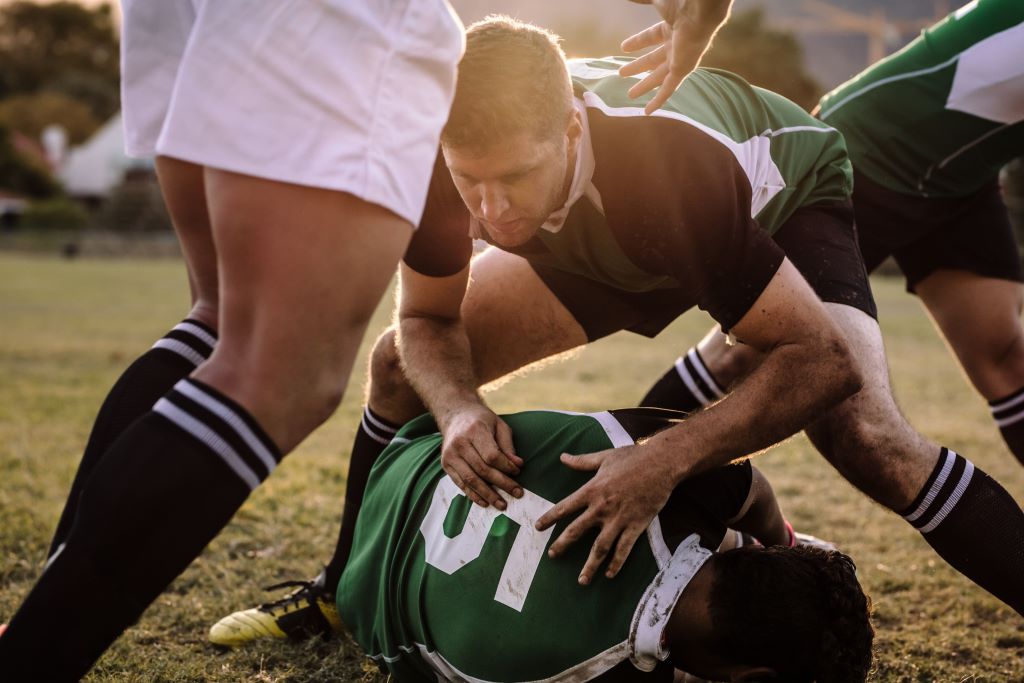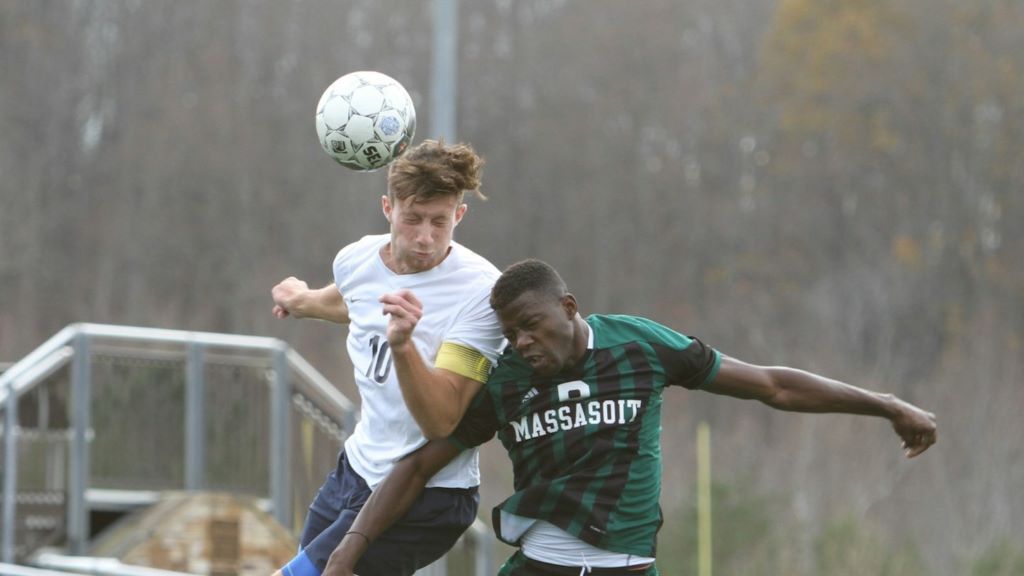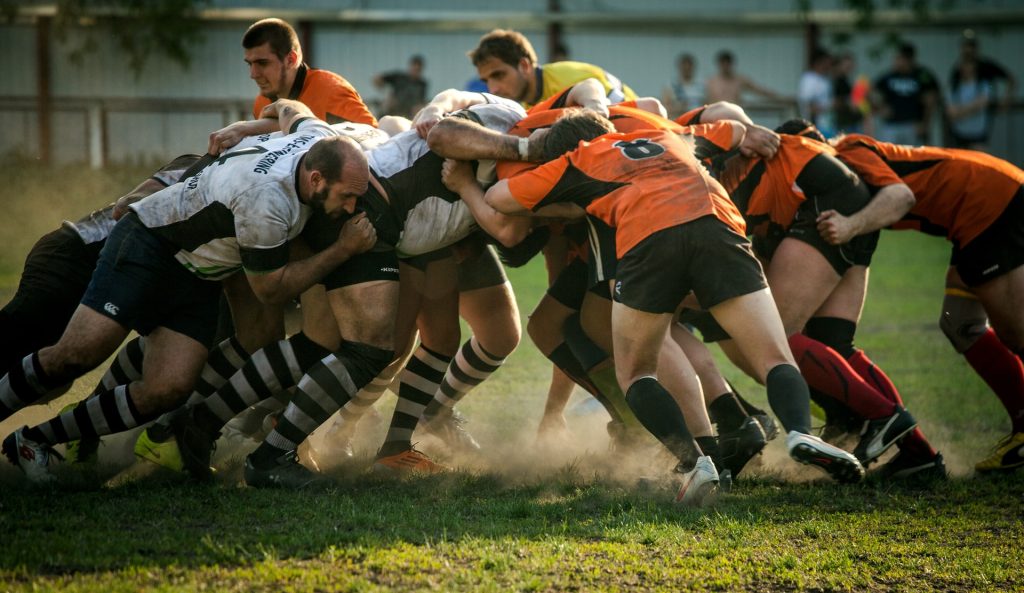Heads up – School Rugby and Head Injuries Explained

The rugby season is kicking off in schools across South Africa and players, parents, coaches and referees are preparing for exciting, yet physically demanding matches. In many sports, injuries are an unfortunate, common occurrence. Rugby, inherently a contact sport, also carries the inevitable risk of head injuries, ranging from minor concussions to severe Traumatic Brain Injuries (TBIs).
The importance of early detection
The early detection of head injuries is essential for effective treatment and preventing further complications. In many cases, the symptoms of a concussion or TBIs may not be immediately apparent and athletes may continue playing which can lead to further damage.
Accurate diagnosis and management of head injuries require a combination of clinical evaluation and advanced imaging techniques. Dr Hofmeyr Viljoen, radiologist at SCP Radiology talks about the nature of these injuries, the critical role radiology plays in diagnosing and managing them and what preventative measures can be taken.
Understanding head injuries in rugby
Dr Viljoen explains that there are several types of head injuries common in rugby. ‘The most frequent is concussion, a mild traumatic brain injury occurring when the brain is jolted inside the skull from an impact or violent movement. Concussions can be mild or lead to significant short and long-term issues. Occasionally, with more severe injuries we see skull fractures, contusions and haemorrhage surrounding the brain. These require urgent diagnosis and management.’
Recognising the symptoms
He emphasises awareness of concussion symptoms, including headaches, dizziness, nausea, confusion, memory problems, sensitivity to light and difficulty concentrating. ‘Immediate recognition is vital,’ he explains. ‘A player with any of these symptoms must be removed from play immediately to prevent further injury.’
The role of radiology
Radiology plays an essential part in accurately diagnosing the extent of head injuries. According to Dr Viljoen, Computed Tomography (CT) scans are always the first imaging method used in emergency settings. Although patients with concussion typically do not have significant imaging findings, it is crucial to image those patients with severe concussion or atypical symptoms. ‘CT scans rapidly detect serious issues like fractures, brain swelling and bleeding, providing crucial information for urgent treatment decisions,’ he explains.
Magnetic Resonance Imaging (MRI) is used in situations requiring more detailed evaluation, particularly when concussion symptoms persist or worsen. ‘MRI excels in identifying subtle injuries, such as microbleeds and brain swelling, often missed by CT scans,’ says Dr Viljoen. Unlike CT scans, MRI does not use radiation, making it a safer option for repeated assessments over time.
Advanced imaging methods
Emerging imaging techniques, such as Diffusion Tensor Imaging (DTI), show promise for better understanding and management of head injuries, especially the subtle effects of concussions. ‘DTI helps identify damage to the brain’s white matter, potentially guiding return-to-play decisions and treatment strategies,’ notes Dr Viljoen.
Understanding possible complications – Second Impact Syndrome (SIS)
SIS is a rare but extremely serious condition that occurs when a person sustains a second concussion before fully recovering from an initial concussion. This second injury doesn’t have to be severe to trigger SIS – it can even be minor – but it causes rapid and severe brain swelling (cerebral oedema).
The brain’s ability to regulate its blood flow and pressure is compromised following the initial concussion, making it vulnerable to catastrophic swelling after a subsequent impact. Symptoms can escalate quickly, often within minutes, including loss of consciousness, severe headache, dilated pupils, respiratory failure and even death. Young athletes are especially vulnerable to SIS. Due to its rapid progression and severity, SIS is considered a medical emergency requiring immediate intervention.
Preventing SIS involves strictly adhering to concussion management protocols, ensuring full recovery after any head injury and carefully monitoring symptoms before returning to sports or high-risk activities.
Addressing Chronic Traumatic Encephalopathy (CTE)
Dr Viljoen says CTE is a long-term degenerative brain condition linked to repeated head impacts. ‘CTE is challenging because currently, it can only be definitively diagnosed after death. However, ongoing research aims to develop methods to detect CTE in living patients, potentially using advanced imaging techniques like Positron Emission Tomography (PET).’ Most research is focused on advancing non-invasive methods to see what is happening inside the brain of a living person and to track it over time.
Common causes of head injuries in rugby
- These primarily arise from the high-impact nature of the sport, with tackling identified as a significant risk factor. Tackling, particularly when performed incorrectly or at a dangerous height, frequently leads to head trauma. Young players are especially vulnerable as their tackling techniques may not yet be fully developed, increasing the likelihood of injury. Teaching safe and correct tackling methods early is a way to mitigate these risks
- Rugby’s dynamic gameplay often results in players being brought down forcefully or falling awkwardly. Even with protective gear, the impact of the head striking the playing surface can lead to concussions or more severe trauma
- Due to the speed and intensity of the game, unintended impacts between players are inevitable. These include clashes of heads or impacts from knees and elbows, which can result in injuries ranging from mild concussions to more severe brain injuries. Preventative strategies and safer playing practices can reduce these risks
Prevention remains critical
Dr Viljoen emphasises the importance of proper training: ‘Educating young players on safe tackling techniques and enforcing protective protocols significantly reduces injury risks. Protective gear like headguards can minimise superficial injuries, though it does not prevent concussions.’
He also stresses the importance of concussion protocols. ‘Coaches at schools and clubs must rigorously apply concussion management strategies, ensuring players are adequately assessed and cleared by medical professionals before returning to the field.’ Under-reporting in schoolboy ruby often occurs because the player either wants to stay in the game and/or doesn’t recognise the symptoms of concussion.
Dr Viljoen concludes, ‘Rugby is a fantastic sport for building teamwork and resilience but player safety must always come first. Through awareness, timely medical intervention and proper preventative strategies, we can significantly reduce the risk and severity of head injuries, allowing young athletes to safely enjoy the game they love.’



